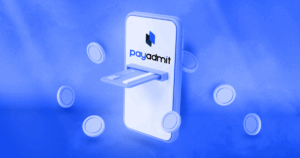If you run an online business, finding a reliable gateway is important for managing costs and ensuring overall profitability. This technology enables secure transactions but also comes with extra charges. Your e-commerce business needs to pay for using the services of a gateway. These costs are never the same, which makes you want to double-check the fees for multiple providers.
If your company is approaching a global audience, knowing how to deal with gateway fees is essential for reaching a solid net revenue. In this article, you can learn more about these charges and how to manage them effectively.

Gateways require businesses to pay for processing their online payments. Gateway price models determine how businesses are charged for using gateway services. These models help providers cover the costs of transferring money from customers to merchants, preventing fraud, and complying with financial regulations.
Gateways usually use one of three models: interchange plus, flat rate, and tiered. Each one has its strengths and weaknesses. Some are easier to understand, while others are easier to calculate. Some are suitable for small businesses, while others work well for large enterprises. Let’s see how to think about each model strategically.
Payment processors have various price structures to support various transaction patterns. Understanding their structures helps you meet your business needs. We will explore the most common payment pricing structures below.
Interchange plus pricing is considered to be the most transparent pricing model in payment processing. The payment processor passes the interchange fees (imposed by card networks like Visa or American Express) and card association fees directly to the merchant, along with a small markup to cover the processor’s costs. Every financial operation is based on the standard interchange charge, a processor markup, and potentially a gateway fee if a separate gateway provider is used.
Pros
Cons
Flat rate pricing has a clear gateway fee structure. Businesses pay a fixed percentage for every transaction, regardless of the card type or payment processing format. As the name suggests, this pricing model has one flat fee for one type of transaction. Bank cards may have different charges, so providers tend to use the higher fee to cover their expenses. This makes your cost structure much higher compared to other price models.
Pros
Cons
Tiered pricing organizes all transactions into qualified, mid-qualified, and non-qualified categories. Each one represents a different cost level based on the card type and the format of transaction processing. The qualified category represents card-present and debit card transactions due to their high security. The mid-qualified category represents reward and cash-back cards, as well as some online and phone transactions. The non-qualified category represents everything that does not cover the previous categories. Each transaction will be charged at the rate that has been set for the specific category. This makes the credit card statement easier to understand.
Pros
Cons

What is a gateway fee? Businesses face this cost when using a gateway’s services, mainly for processing credit card transactions. Here are other fees charged by providers:
The payment gateway processing fee is based on different factors, including business size, transaction volume, location, technical requirements, and risk profile. Other impacts include integration complexity and security features. Understanding these elements helps businesses select a secure gateway cost that matches operational and financial goals.
The gateway cost may vary depending on the business size and the transaction volume. Large businesses that process more transactions can discuss potentially lower transaction fees due to the number of transactions they bring. Small businesses or start-ups may have to deal with higher fees since they enable fewer transactions. Many gateways come up with price packaging systems, offering a lower price per transaction as the number of transactions goes up.
Let’s say that a company with an annual turnover of $500,000 may be charged 2.5 % per transaction. The company making $20 million annually may be charged only 1.5% due to the high amount of purchase that earns a higher discount.
The type of industry also matters. Businesses in online gaming or CBD sales have to pay higher fees due to high chargeback risks. Companies operating internationally may pay extra fees for currency conversion or international transactions. If the company is B2B or B2C, additional charges are there. B2B transactions might use corporate cards with different fee structures, which cause extra costs.
Technical and operational requirements have a direct impact on how businesses treat financial operations and what charges they have to deal with. For example, there are several types of providers, each bringing different costs:
Gateway fees depend on geographical location and market aspects. These charges are also determined by locality and competition within the area. In countries with strict financial regulations and security standards, gateways are more likely to cover higher compliance expenses.
Fees may also depend on the currency to be processed. With that said, systems operating in Europe might have a completely different cost structure than in Asia. Handling payment in different currencies may involve other charges such as currency exchange rate charges.

While many gateways promote simple pricing, there are often hidden payment gateway fees that can catch businesses off guard. Businesses might not even know that there is any extra charge. These hidden costs are often buried in business agreements, which makes them go unnoticed for a while. If you don’t want them to affect your profits, learn how to detect them in advance.
The payment gateway price has become a central part of doing business these days. Unfortunately, many payment processors are deceptive with their corporate clients. They announce low rates, promising that you’ll be paying less. But your company ends up paying more by the end of the month. Here are the most common hidden charges you should be ready for:
These hidden fees might seem like no big deal. When charged collectively, they can seriously impact your company’s profitability. A business processing $100,000 annually at a 1.5% transaction rate with added flat fees could lose around $3,000 in payment gateway cost. The impact becomes obvious in the long run.
To avoid unpleasant charges, your business should act more carefully when signing a contract with the provider. Read the fine print till the end; don’t miss any clauses. Even after signing a deal, you should check invoices regularly. If you find unexpected charges, take action immediately. It won’t hurt to use fraud prevention measures, transparent return policies, and efficient customer service to reduce disputes. For international sales, partnering with domestic gateways can lower conversion fees and enhance customer trust.
Many businesses have faced unexpected costs that impacted their operations. Blue Soda Promo found out to be paying more than expected. Even though they agreed to a flat rate, they were charged based on the tiered gateway price model rate. Most of their transactions ended up being downgraded to higher tiers, increasing the overall costs. Shopify Payments is another case of unfair pricing. They had to deal with cross-border and conversion charges they hadn’t expected. These additional fees reached 3% per sale, reducing their profitability on global sales.
These cases demonstrate the significance of choosing a reliable provider and reaching a transparent agreement with no hidden clauses. Clear gateway price method reduces the risk of hidden costs which could quietly drain your profits.